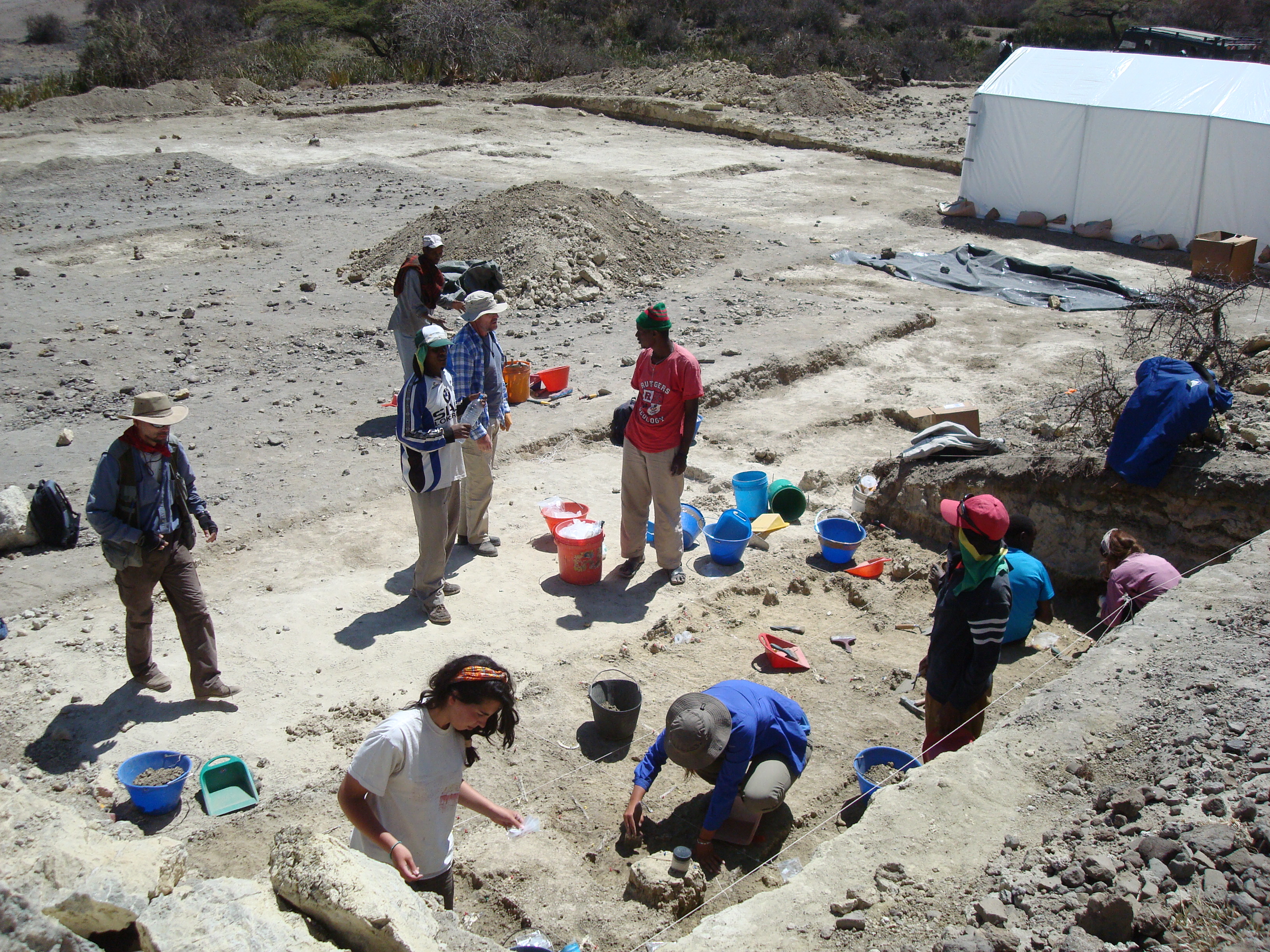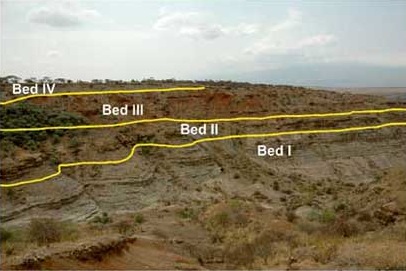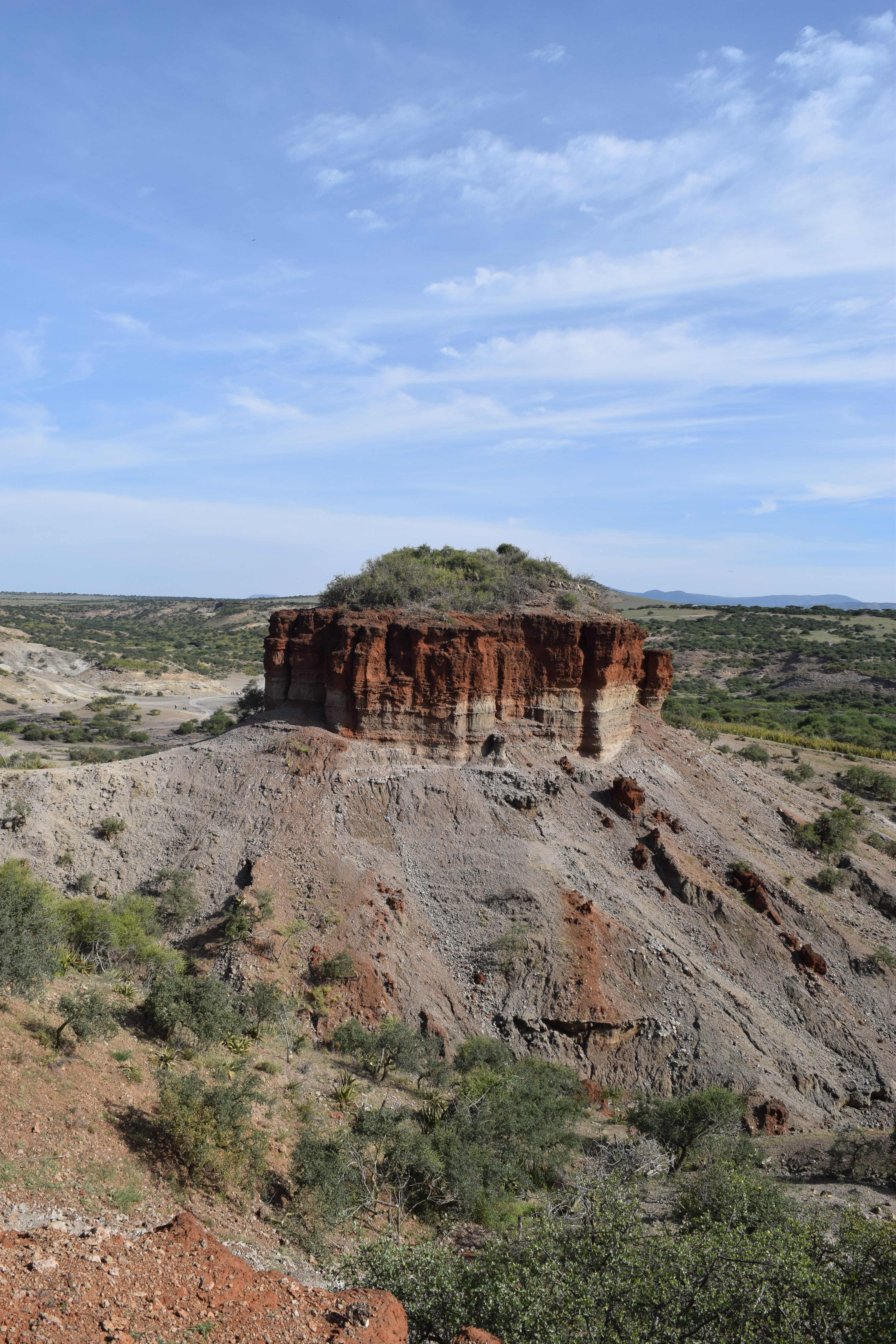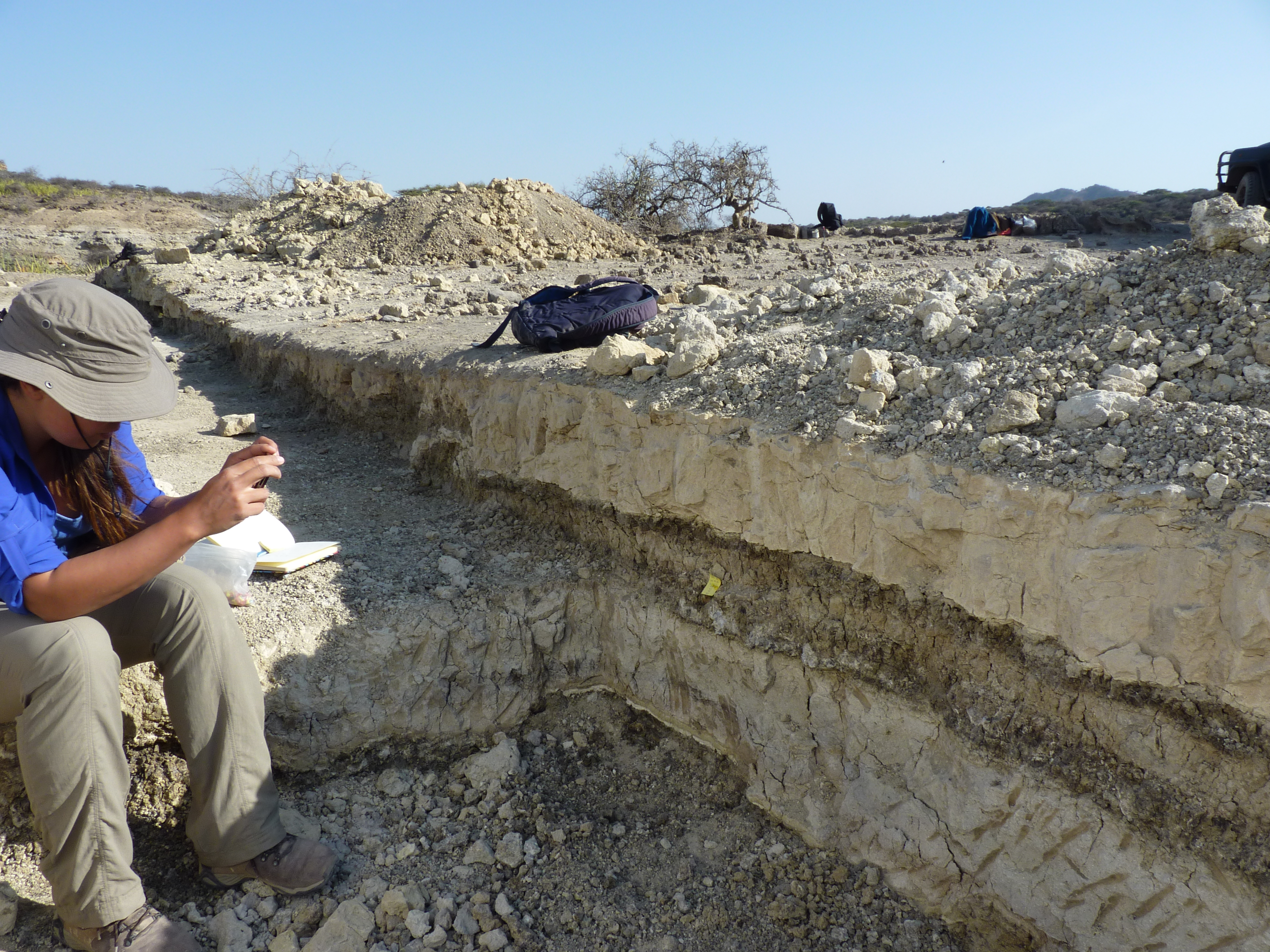
Ainara Sistiaga takes a photo of one of the beds of study at Olduvai. Image Courtesy: Ainara Sistiaga
Ancient flora and fauna may leave behind traces of their existence in the geologic record — both in the form of visible fossils, like bones or shells, and in the form of molecular fossils that are far too small to view with the naked eye, like lipid biomarkers. Olduvai Gorge, an archeologically-significant site in Tanzania, contains an abundance of both of these types of fossils. While Olduvai Gorge contains the most continuous known record of human evolution within the past 2 million years, our understanding of the environmental evolution of the site is less clear-cut, and is based on larger regional and global estimates. In the last few years, there has been an effort to illuminate our understanding of the local environmental variability. However, our preliminary data show that the landscape of Olduvai Gorge is site-specific.
In order to better understand the impact of this landscape on human evolution, it is necessary to investigate the site-specific environments on a scale sufficiently accurate to uncover patterns that could convey behavioral information.
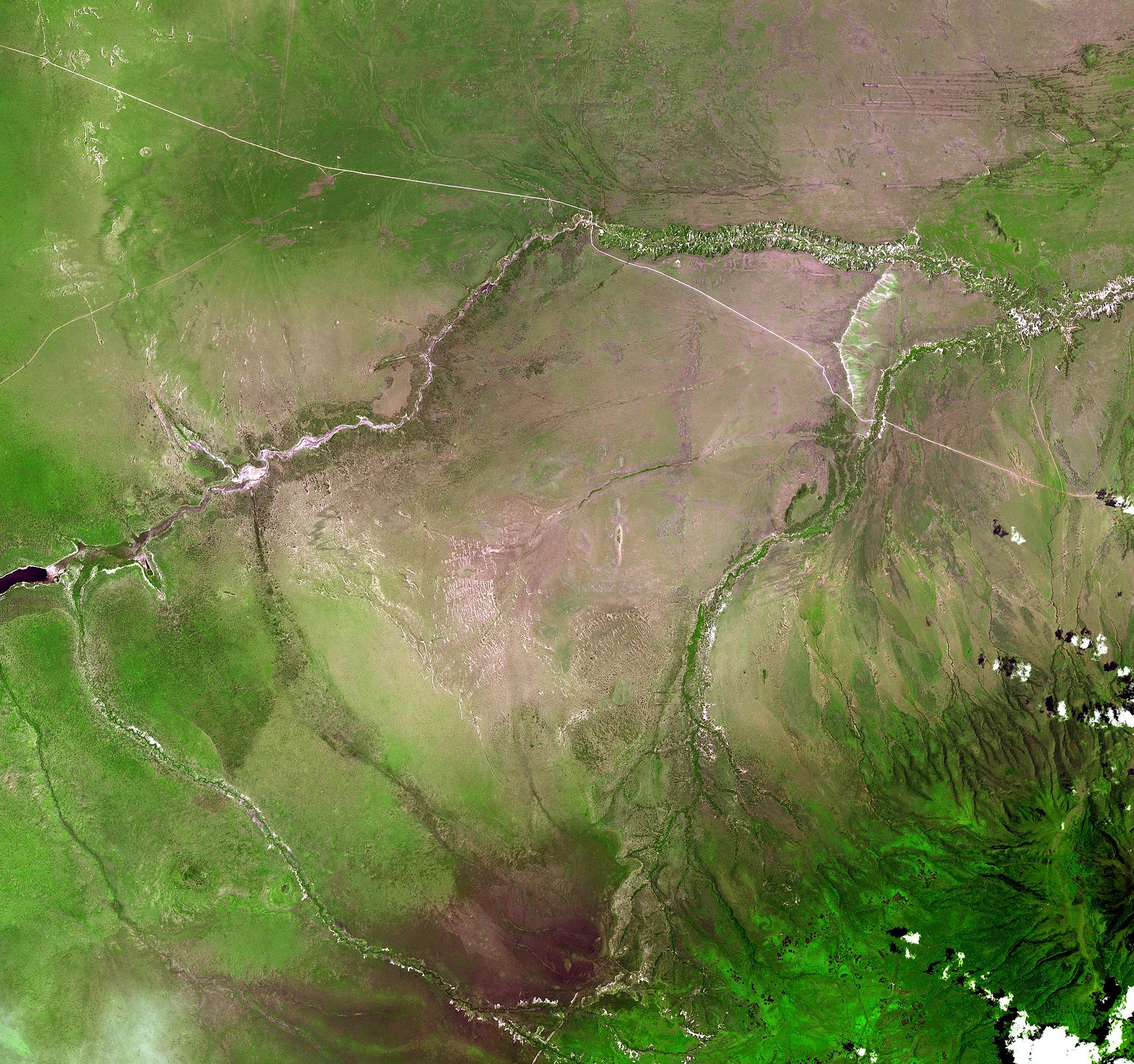
Olduvai Gorge from space. Image Courtesy: NASA/GSFC/METI/ERSDAC/JAROS, and U.S./Japan ASTER Science Team
In our research, we use lipid biomarkers and their isotopic signatures to reconstruct the the Olduvai Gorge paleolandscape, and from that we may infer the relationship between environmental conditions and early humans. Ongoing studies of Olduvai Gorge suggest a diversity of microhabitats, dominated by different plant biosignatures that suggest the presence of woody plants, aquatic macrophytes, and mosses. In the Summons Lab, we focus on Bed I (1.8 Ma) and Bed II (1.7 Ma) — stratigraphic layers previously unstudied for extensive lipid biomarker analysis at high resolution.
